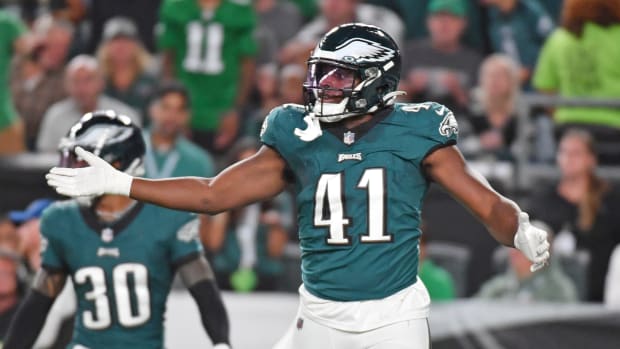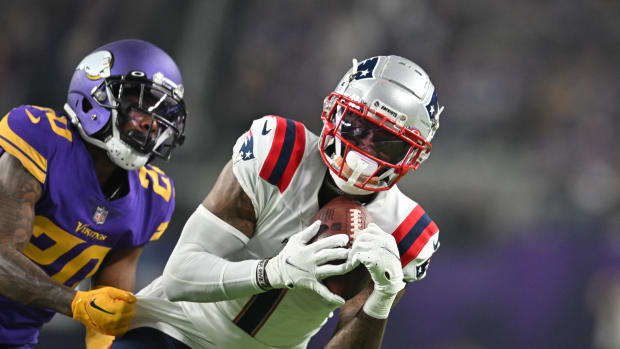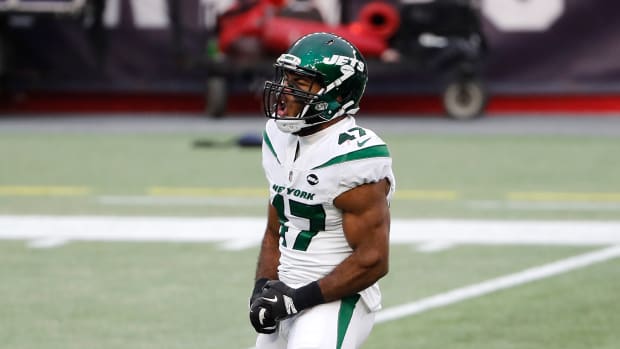The Onside Kick May Be Changing
The NFL’s new kickoff rules designed to keep players safer by reducing full-steam collisions was an effective change in 2018 and was made permanent last season.
Then there was the rule change in 2015 that fundamentally altered the way PATs are handled. It was in that year when the league decided to move the PAT kick from the 2-yard line to the 15-yard line.
That added distance has made things more interesting after a touchdown is scored. No longer is the 33-yard PAT as automatic as it used to be.
Now comes Thursday, when the league owners will conduct a virtual meeting, scheduled to run about two hours and at which time another batch of proposed rules will be voted upon.
The biggest proposed rule change will be to eliminate the onside kick as we know it and allow teams to attempt a fourth-and-15 from their own 25 rather than try the traditional onside kick.
The proposal was put forth by the Eagles, and support for the new rule proposal seems to be growing.
The rule change would go something like this:
- Teams can opt to take the ball at its own 25 after a score of any kind. If they convert the first down, they keep the ball. If not, the ball gets turned over to the opponent.
- Teams would only be allowed to use the “onside” kick twice in regulation and not at all in overtime.
- All penalties would be enforced, so if an offense is called for illegal procedure, they back up five yards and face a fourth-and-20. If a first down is gained, but there is holding on the offense or pass interference on the offense the ball gets pushed back 10 yards, to the 15, and it becomes a fourth-and-20.
- Once a team commits to going for the “onside” it cannot change its mind. It can only do that before the referee signals the ball ready for play, meaning that once an offense comes to the line and the play clock begins to tick it can call a timeout, but it cannot change its mind and say, “Oops, never mind, we want to kick off now.”
- That applies also to a penalty. A team cannot change its mind if it is pushed back into a fourth-and-20 or further situation.
- It will be an untimed down.
Since the start of the 2018 season, when the league instituted new kickoff rules, the recovery rate on onside kicks has been 10.5 percent. It was 19.5 percent from 2001 to 2017, according to ESPN Stats & Information.
When the Eagles submitted the proposal, they said the idea was to provide “excitement and competition late in the game.”
It certainly could do that, but why wait until the end of the game?
What would prevent a team from scoring on its first offensive possession then try to keep the ball for another possession and go up two scores right away?
It’s risky and would take some time to develop the kind of analytics that guide many coaches, including the Eagles’ Doug Pederson.
Still, some aggressive, outside-the-box types who call a gadget play in a Super Bowl on fourth down at the end of the first half against a dynasty in the New England Patriots - like Pederson ibn SBLII - may not wait for the analytics department to sink its teeth into the numbers.
Then there’s Eagles defensive coordinator Jim Schwartz, whose “sticks defense” was created to clamp down in situations just like this one, and regardless of popular opinion, it is effective much more often than not.
No matter how good Schwartz’s sticks defense is, fourth-and-15 would likely favor the offense as teams would begin to carve out time during practice to run plays designed specifically for that situation.
Of course, defenses will work on it as well but offenses in this situation typically have the advantage because they know the play and defenses have to react to it.
This could be much ado about nothing, however.
Owners rejected a similar proposal last year from the Denver Broncos, but the league did try it during the 2019 Pro Bowl.




